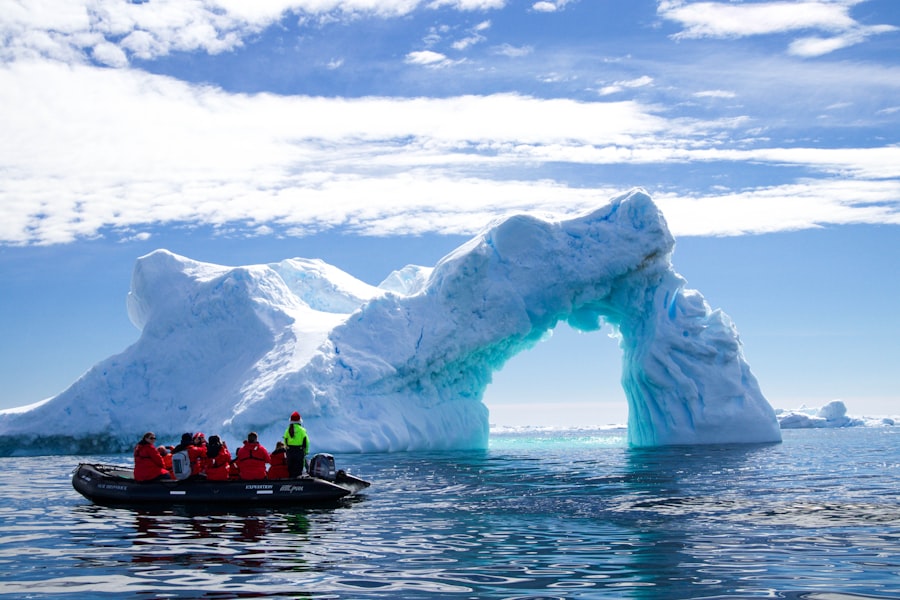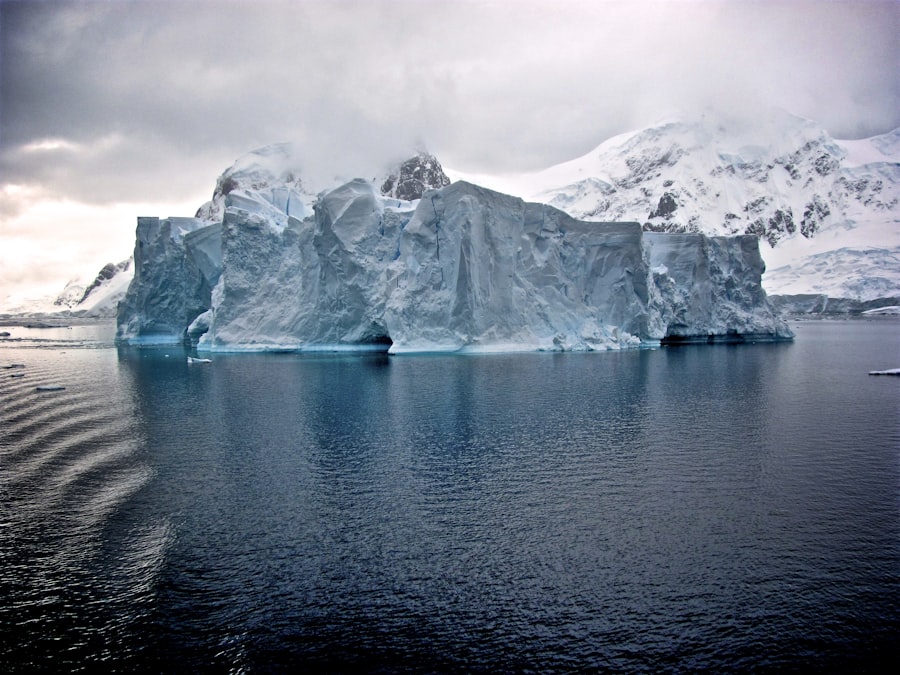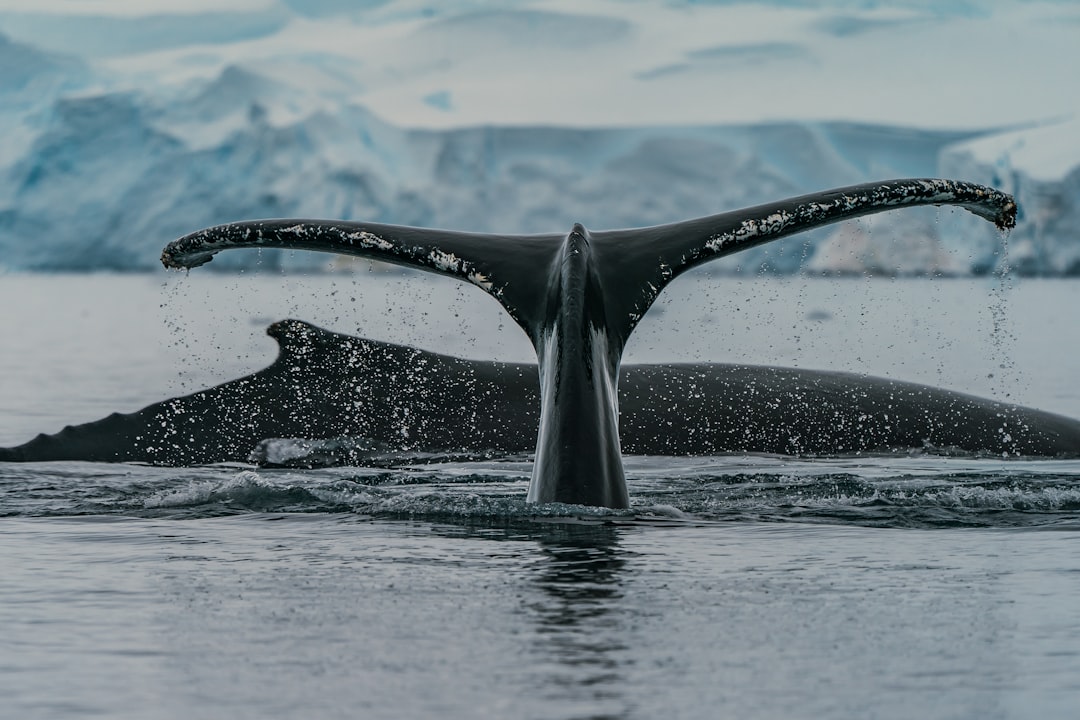The Drake Passage, a body of water situated between the southern tip of South America and Antarctica, is renowned for its tumultuous seas and unpredictable weather. Spanning approximately 600 miles, this passage serves as a critical maritime route for vessels traveling to and from the Antarctic region. Named after the English explorer Sir Francis Drake, who navigated these waters in the late 16th century, the Drake Passage is not only a geographical landmark but also a significant point of interest for adventurers and researchers alike.
The passage is characterized by its unique oceanographic features, including the confluence of the Atlantic and Pacific Oceans. This convergence creates a dynamic environment where currents collide, leading to some of the most challenging sailing conditions in the world. The waters are often described as a “gateway to Antarctica,” and for many travelers, crossing the Drake Passage is a rite of passage that symbolizes the journey into one of the last great wildernesses on Earth.
Understanding the complexities of this region is essential for anyone planning to navigate its waters.
Key Takeaways
- The Drake Passage is a body of water between South America’s Cape Horn and the South Shetland Islands of Antarctica, known for its rough seas and challenging conditions.
- Weather in the Drake Passage can be unpredictable, with strong winds, high waves, and rapidly changing conditions, making it important to choose the right vessel for a safe and comfortable journey.
- When choosing a vessel for crossing the Drake Passage, consider factors such as size, stability, and experience of the crew to ensure a safe and enjoyable trip.
- Safety precautions such as securing loose items, wearing appropriate clothing, and following crew instructions are essential for a smooth and safe passage through the Drake Passage.
- Packing and preparation for a journey through the Drake Passage should include warm and waterproof clothing, seasickness medication, and essential personal items for a comfortable and enjoyable experience.
Weather and Sea Conditions
The weather in the Drake Passage is notoriously unpredictable, with conditions that can change rapidly within a matter of hours. Travelers should be prepared for a range of weather scenarios, from calm seas to fierce storms. The passage is known for its strong winds, which can reach speeds of up to 60 knots, and waves that can rise to heights of 30 feet or more.
Typically, the best time to traverse the Drake Passage is during the austral summer months, from November to March. During this period, temperatures are milder, and sea conditions tend to be more favorable.
However, even in summer, travelers should remain vigilant and ready for sudden changes in weather. Understanding these conditions is crucial for ensuring a safe and enjoyable journey across this formidable stretch of ocean.
Choosing the Right Vessel

Selecting the appropriate vessel for crossing the Drake Passage is paramount to ensuring safety and comfort during the journey. Various types of ships are equipped to handle the challenges posed by these waters, ranging from large expedition cruise ships to smaller ice-strengthened vessels designed specifically for polar exploration. Each type of vessel offers distinct advantages and disadvantages, depending on the traveler’s preferences and objectives.
Larger expedition ships often provide more amenities and stability, making them suitable for those who prioritize comfort during their crossing. These vessels typically feature advanced navigation systems and experienced crews familiar with the intricacies of the Drake Passage. On the other hand, smaller ships may offer a more intimate experience, allowing travelers to engage more closely with their surroundings and wildlife.
Ultimately, choosing the right vessel involves considering factors such as group size, budget, and desired level of adventure.
Safety Precautions
| Safety Precautions | Metrics |
|---|---|
| Number of safety inspections conducted | 100 |
| Number of safety training sessions held | 50 |
| Number of safety incidents reported | 10 |
| Percentage of employees trained in safety procedures | 90% |
Safety should always be a top priority when planning a crossing of the Drake Passage. Given its reputation for rough seas and unpredictable weather, travelers must take several precautions to ensure their well-being throughout the journey. First and foremost, it is essential to choose a reputable tour operator with a proven track record in navigating these waters.
Experienced crews are familiar with emergency protocols and can respond effectively to any unforeseen circumstances. In addition to selecting a reliable operator, travelers should also familiarize themselves with safety equipment on board. Life jackets, emergency beacons, and first aid kits are standard provisions on most vessels.
Passengers should participate in safety briefings provided by the crew to understand evacuation procedures and other critical information. By taking these precautions seriously, travelers can significantly reduce risks associated with crossing the Drake Passage.
Packing and Preparation
Proper packing and preparation are vital components of a successful journey across the Drake Passage. Given the variable weather conditions, travelers should pack layers of clothing that can be easily added or removed as needed. Waterproof outer layers are essential to protect against wind and rain, while thermal undergarments will help maintain warmth during colder spells.
Additionally, sturdy footwear is crucial for navigating wet decks and uneven terrain. Beyond clothing, travelers should also consider packing personal items that enhance comfort during the crossing. Seasickness remedies are highly recommended, as many individuals may experience motion sickness in turbulent waters.
Binoculars for wildlife spotting, cameras for capturing breathtaking scenery, and personal entertainment options can also make the journey more enjoyable. By preparing adequately, travelers can ensure they are ready for whatever challenges may arise during their passage.
Wildlife Spotting

One of the most captivating aspects of crossing the Drake Passage is the opportunity for wildlife spotting. This region is home to an array of marine life, including seals, whales, and various seabird species. Travelers may encounter majestic humpback whales breaching in the distance or playful sea lions basking on ice floes.
The chance to observe these creatures in their natural habitat adds an exhilarating dimension to the journey. Birdwatchers will also find delight in the diverse avian population that inhabits this area. Species such as albatrosses and petrels are commonly seen soaring above the waves, their impressive wingspans allowing them to glide effortlessly over long distances.
Many vessels offer guided wildlife spotting excursions led by knowledgeable naturalists who can provide insights into the behaviors and habitats of these fascinating animals. For nature enthusiasts, crossing the Drake Passage becomes an unforgettable experience filled with opportunities for discovery.
Navigation and Route
Navigating the Drake Passage requires skillful seamanship and an understanding of ocean currents and weather patterns. Experienced captains utilize advanced navigation technology to chart safe courses through these challenging waters. The route taken may vary depending on factors such as wind direction, wave height, and visibility conditions at sea.
Typically, vessels will follow established routes that have been tested over time for safety and efficiency. However, flexibility is key; captains may need to adjust their course in response to changing conditions or unexpected obstacles. Travelers should appreciate that navigating this passage is not merely about reaching a destination but also about embracing the journey itself—one filled with adventure and unpredictability.
Historical Significance
The historical significance of the Drake Passage cannot be overstated. It has long been a critical maritime route for explorers seeking to uncover the mysteries of Antarctica. Sir Francis Drake’s voyages in the late 1500s marked one of the first European encounters with these waters, paving the way for future expeditions that would shape our understanding of polar regions.
Throughout history, many notable explorers have traversed this passage in pursuit of scientific knowledge or territorial claims. The legacy of these journeys continues to influence modern exploration efforts today. As travelers cross the Drake Passage, they become part of this rich tapestry of exploration history—a connection that adds depth to their experience as they navigate through waters steeped in adventure.
Crossing the Drake Passage: What to Expect
For those preparing to cross the Drake Passage, it is essential to know what to expect during this journey. The experience can range from smooth sailing to exhilaratingly rough seas; thus, travelers should mentally prepare themselves for both scenarios. The initial days may involve acclimatizing to life aboard ship while adjusting to potential motion sickness.
As passengers embark on their crossing, they will likely witness stunning vistas of open ocean interspersed with glimpses of distant landmasses. The thrill of adventure permeates the air as travelers anticipate their arrival in Antarctica—a land characterized by breathtaking landscapes and unique wildlife encounters. Embracing both excitement and uncertainty will enhance their overall experience as they navigate this remarkable passage.
Activities and Excursions
While crossing the Drake Passage primarily involves travel between destinations, there are numerous activities and excursions available on board that enrich the experience further. Many vessels offer educational programs led by experts in marine biology or glaciology who provide insights into the ecosystems travelers will encounter in Antarctica. Additionally, some ships feature onboard amenities such as observation lounges or outdoor decks where passengers can relax while enjoying panoramic views of their surroundings.
Photography workshops may also be offered for those eager to capture stunning images of wildlife or landscapes along their journey. Engaging in these activities allows travelers to make the most out of their time at sea while fostering connections with fellow adventurers.
Tips for a Smooth Passage
To ensure a smooth passage across the Drake Passage, travelers should keep several tips in mind before embarking on their journey. First and foremost, staying informed about weather forecasts can help set realistic expectations regarding sea conditions during travel days. Being mentally prepared for potential rough seas can alleviate anxiety when faced with challenging weather.
Additionally, maintaining open communication with crew members regarding any concerns or questions can enhance overall comfort levels aboard ship. Engaging with fellow passengers fosters camaraderie during shared experiences—whether it’s bonding over seasickness remedies or marveling at wildlife sightings together. Ultimately, embracing flexibility while remaining adaptable will contribute significantly to enjoying this remarkable adventure through one of nature’s most awe-inspiring passages—the legendary Drake Passage itself!
The Drake Passage, a notorious stretch of water between the southern tip of South America and Antarctica, is often considered one of the most treacherous sea routes in the world. Its unpredictable weather and strong currents make it a challenging passage for explorers and researchers heading to the icy continent.
This article delves into the history and challenges of the Drake Passage, providing a deeper understanding of its role in Antarctic exploration. You can read more about it by visiting this page.
WATCH NOW! Drake Passage: Earth’s Deadliest Waters Revealed
FAQs
What is the Drake Passage?
The Drake Passage is a body of water located between the southern tip of South America and the northern tip of the Antarctic Peninsula. It connects the southwestern part of the Atlantic Ocean with the southeastern part of the Pacific Ocean.
Why is the Drake Passage significant?
The Drake Passage is known for its rough seas and strong winds, making it one of the most challenging and unpredictable waterways to navigate. It is also a major conduit for the movement of ocean currents and marine life between the Atlantic and Pacific Oceans.
How does the Drake Passage relate to Antarctica?
The Drake Passage is the most common route for ships traveling to and from Antarctica. It is the shortest distance between South America and the Antarctic Peninsula, making it a crucial gateway for scientific research expeditions, tourism, and supply shipments to the continent.
What is the climate like in the Drake Passage?
The climate in the Drake Passage is characterized by strong winds, high waves, and rapidly changing weather conditions. It is notorious for its rough seas and stormy weather, earning it the nickname “the roughest sea in the world.”
What wildlife can be found in the Drake Passage and Antarctica?
The Drake Passage and Antarctica are home to a diverse range of wildlife, including penguins, seals, whales, and various seabird species. The nutrient-rich waters of the passage support a thriving ecosystem, making it a popular destination for wildlife enthusiasts and researchers.
